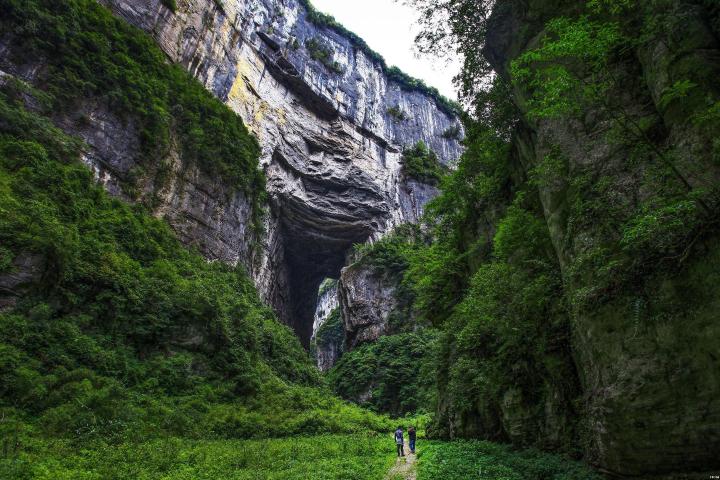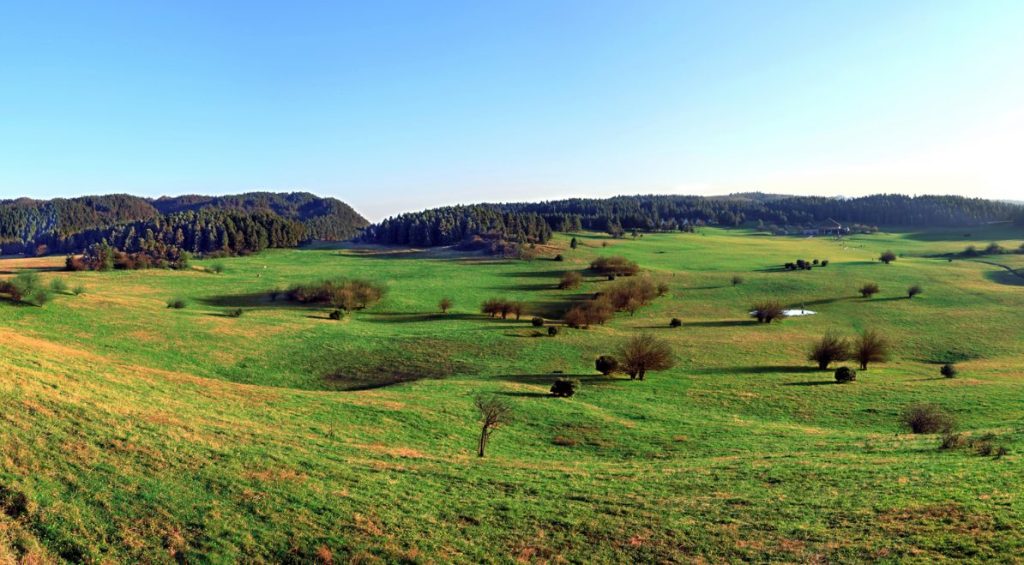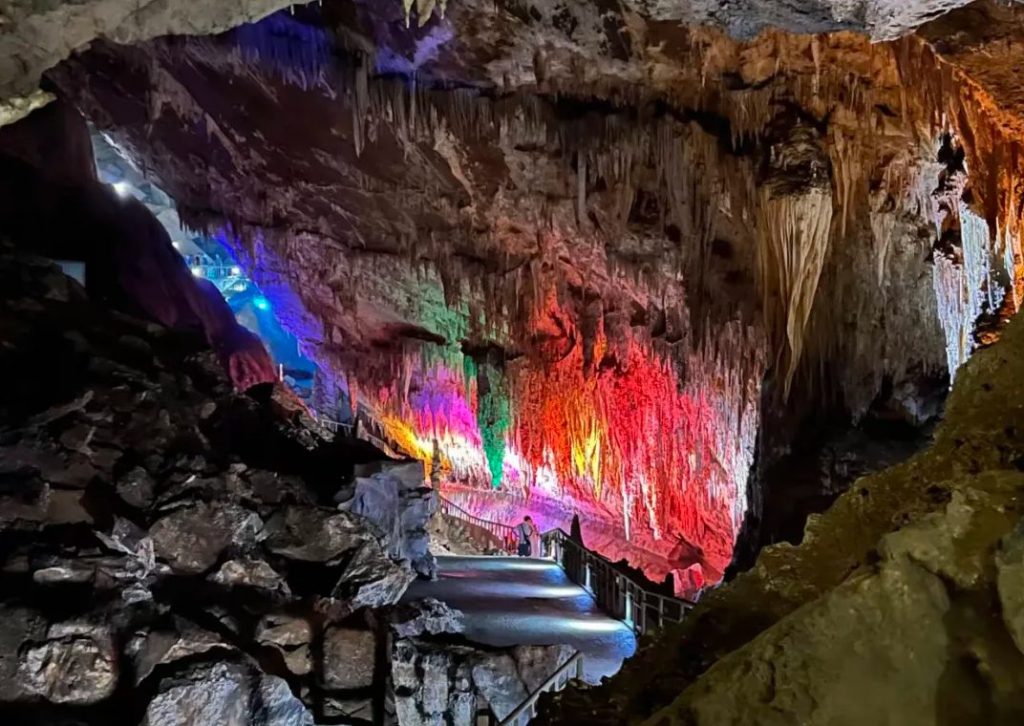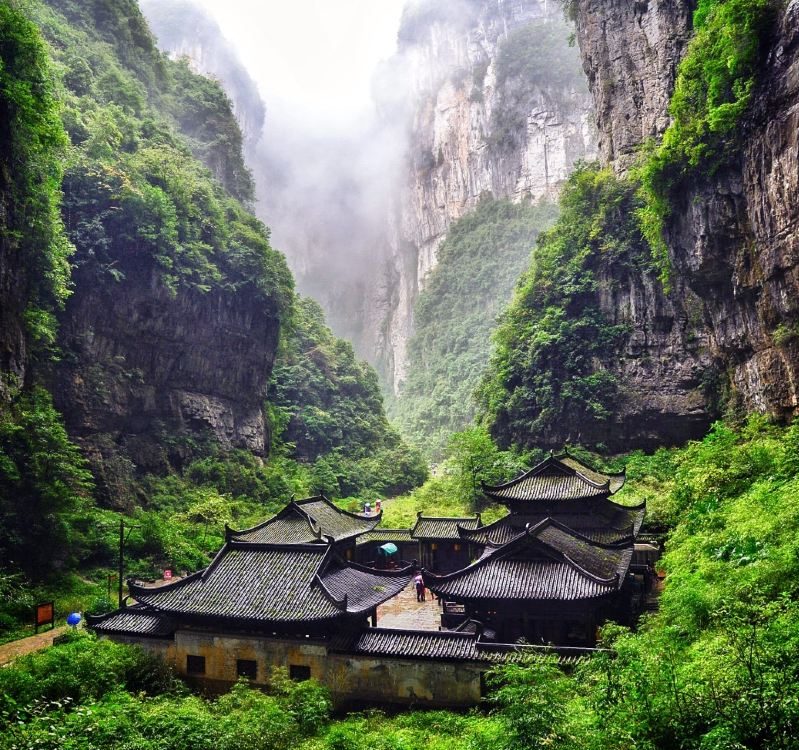Chongqing Wulong Karst Tourist Area has been listed as one of the “must-see destinations” by National Geographic magazine for its rare geological wonders and unexplored charm.
It is not only the setting for Hollywood and Chinese blockbusters such as “Transformers 4” and “A City Full of Gold”, but is also certified by UNESCO as the core area of the World Natural Heritage.
An American geologist exclaimed after visiting the Wulong Karst, “This is simply the Earth’s ‘wrinkle museum’!”
Table of Contents
The four core landscapes of Wulong Karst

Three Born Bridges: a time and space tunnel through the “Oriental Colorado
Imagine that you are standing under a giant stone bridge carved by the power of nature – three natural stone bridges with an average height of more than 300 meters spanning the canyon, with waterfalls pouring down between the bridges, and clouds and fog. This is the world’s largest and highest density of natural bridge group.
Cold Knowledge: The formation of these stone bridges requires the simultaneous fulfillment of the three major elements of karst landforms – soluble rocks, abundant precipitation and crustal movement. The geological structure of Wulong Karst makes this process three times faster than similar landforms!
Recommended way to play:
Hiking the “Tianlong Bridge-Qinglong Bridge-Heilong Bridge” loop, feel the light and shadow in the bridge between the fantastic changes.
Challenge the 1,200-meter-high glass overlook, and record the “architectural miracle in the cracks of the earth” from the perspective of a drone.

Fairy Mountain National Forest Park: China’s version of the “Alpine Ranch”.
Known as the “Switzerland of the East”, the park is characterized by alpine grasslands, virgin forests and strange peaks and rocks, with 100,000 acres of alpine meadows spreading like a green carpet to the sky, and herds of cows and goats intertwined with pine forests and the sea of clouds to form a scene like an oil painting.
Seasonal limited experience:
Spring (April-May): Mountain azaleas and wild cherry blossoms intertwine into a sea of pink and white flowers.
Autumn (October-November): Birch and fir forests are dyed gold, and the early morning stratospheric fog is easy to come across.
Winter (December-February): the rare southern forest and snowfield, you can experience skiing and snowmobiling.

Hibiscus Cave: The “Symphony of Lights” in the Underground World
This underground palace, named “China’s Most Beautiful Cave” by National Geographic, hides stalactite wonders that are even more stunning than those in Guilin’s Reedi Rock. Inside the cave, the temperature is 16℃, 200,000 stalagmites and mantles look like a dream under the colorful lights, and the most famous “Coral Pond” takes 300,000 years to form. It is also the only cave in China to be listed as a World Natural Heritage site.
Photography Tips: Bring a tripod to photograph the “Source of Life” stone flower group, and it is recommended to use a wide-angle lens to capture the depth of the cave.
Longshui Gorge Slit: Exploring the Earth’s Wounds
The 4-kilometer-long Longshui Gorge is only 1 meter wide at its narrowest point, with a 500-meter difference in height between the vertical walls on both sides. Walking on the cliff trestle, under the feet of the turbulent dark river, overhead only a line of light, as if in a science fiction movie in the alien canyon.
Safety tips: wear non-slip hiking shoes and bring a light raincoat (some areas have water spray).
In-depth Cultural Experience
Tujia Hanging Footstools: Survival Wisdom through Architecture
Unlike the wooden walled houses in Europe, the Wulong Tujia Hanging Foot Towers are built in a “dry-fence” structure – the bottom floor is elevated to protect against dampness, the middle floor is for living, and the top floor is for storing food. In the “Original Town”, you can:
Participate in the experience of building a foot-hanging building (craftsmen’s guidance must be booked in advance).
Stay in a remodeled boutique B&B and watch the Milky Way at night with the sound of insects.
Slender Man Culture: “Living Fossil” on the Wujiang River
In the Wujiang River Gallery, take a ride on a traditional pea-cornered wooden boat and listen to the boatman sing the vicissitudes of the Sichuan River Horn. This “water symphony” has been listed as a national non-legacy, and its melody is similar to the blues music on the Mississippi River.
Tujia Cuisine: An Adventure in Sour and Spicy Taste
Sauerkraut Fish: wild chub fish from the Wujiang River is stewed with sauerkraut in an old pot, which is hot and sour and appetizing.
Dupa Pie: a street snack of glutinous rice mixed with diced bacon and deep-fried, excellent with chili noodles.
Three-leaf Chicken: Chicken raised in the forest is slowly simmered in a stone pot, and the soup is as golden as amber.
Recommended restaurant: Jiangkou Fish House in Wulong County (reservations required).

Wulong Karst Tourist Area Tips
Transportation
Airplane: Chongqing Jiangbei Airport→Airport Express K07→Chongqing North Railway Station→Motorized Train (1 hour)→Wulong Station.
Self-driving: Shanghai-Chongqing Expressway to Baomao Expressway, the whole journey takes about 3 hours (recommend renting a car, the transportation between scenic spots is inconvenient).
Recommended Accommodation
Luxury choice: Huabang Hotel in Fairy Mountain (all wooden structure, some rooms with private soup).
Cost-effective choice: Wulong Yi Hotel (walking distance to the visitor center, including breakfast).
Featured experience: “Good Yard” B&B in Guiyuan Town (remodeled from a century-old house).
Two-day itinerary planning
D1: Chongqing→Wulong Station→Tiansheng Three Bridges→Longshui Gorge Seam→Impression of Wulong Live Performance.
D2: Fairy Mountain Forest Park → Furong Cave → Wujiang River Gallery Cruise → Return.
Travel Tips
Best Season: April-June (azalea sea + summer vacation), September-October (colorful forest + sea of clouds).
Equipment list: waterproof hiking shoes, sun hat, portable tripod (photography), mosquito repellent.
Cultural taboos: Do not step on the threshold when entering the Tujia village; ask for permission before photographing people.
The charm of Wulong Karst Tourist Area lies not only in its magnificence, but also in the fact that it has preserved the most primitive model of the earth – there is no over-developed commercial flavor here, only the mountain winds, streams and stories that have been passed down for thousands of years.
As Lonely Planet said, “Wulong is not an attraction, but a deep conversation with the earth.” Pack your bags, this conversation is waiting for you to join.